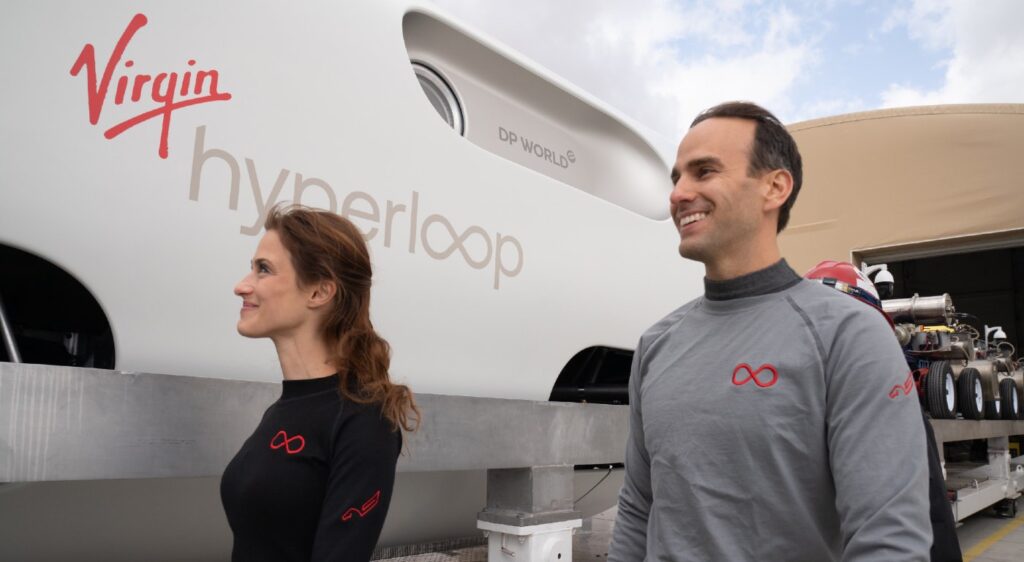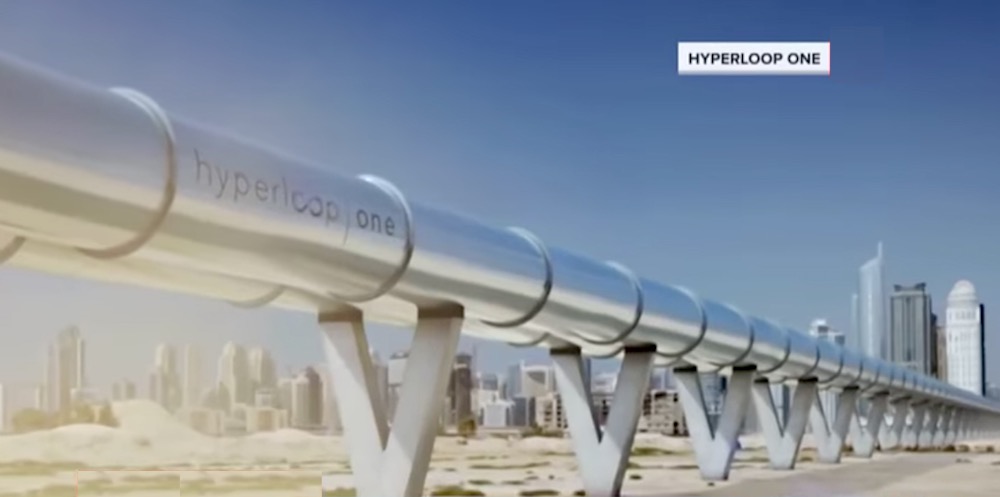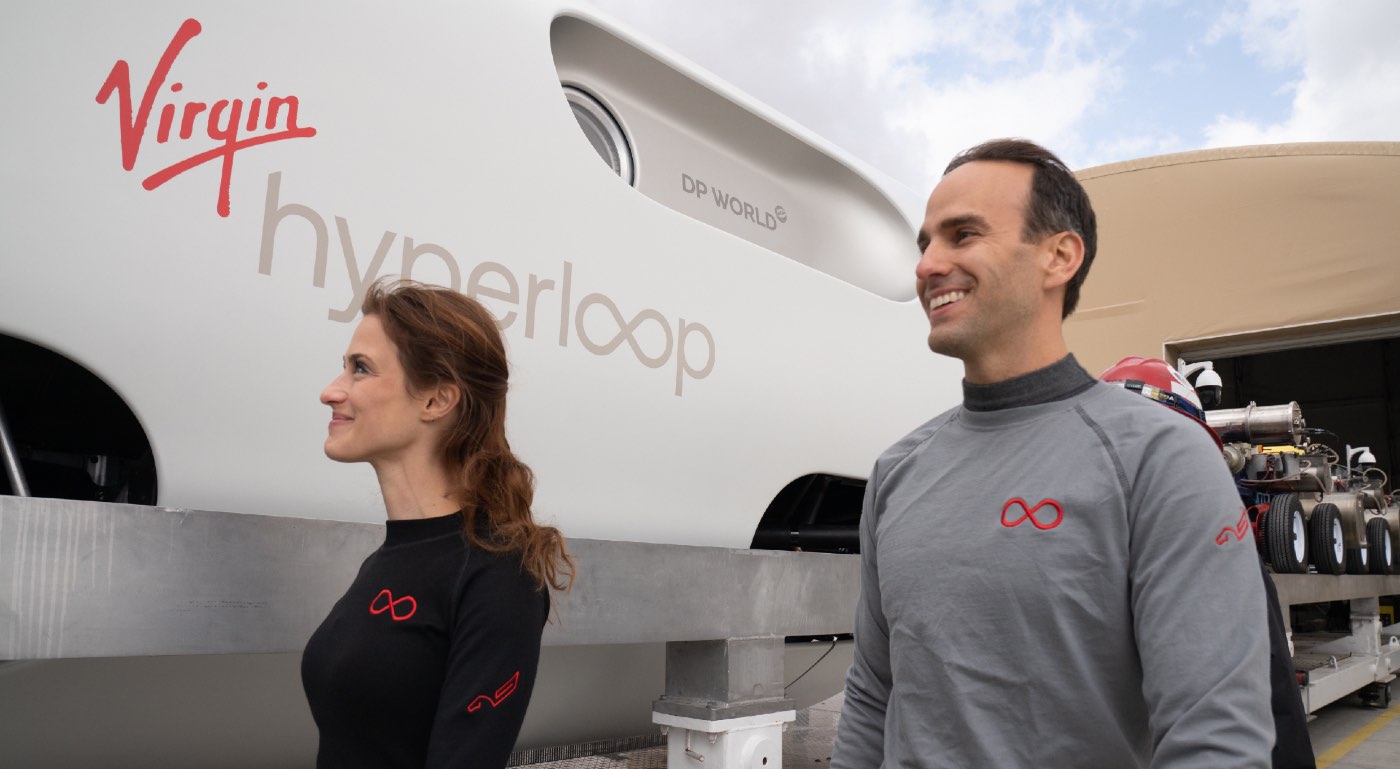After more than 400 tests, Richard Branson’s Virgin Hyperloop, a levitating train of small passenger pods, just made transportation history as it completed its first run with people aboard.

Chief of Technology Josh Giegel and Sara Luchian, the Director of Passenger Experience, reached speeds of 107 mph (172 kph) at the DevLoop testing center in Las Vegas, Nevada. While being only a sixth of the purported top speed of the Virgin Hyperloop, it still represents a major safety milestone.
This comes shortly after Reuters reported that West Virginia will play host to a certification center and test track where the next phase of testing will follow a timeline of achieving safety certification by 2025 and commercial-scale operations by 2030.
“I had the true pleasure of seeing history made before my very eyes,” said Sultan Ahmed bin Sulayem, the chairman of Virgin Hyperloop and chief executive of DP World, the firm which invested around $400 million in the Virgin Hyperloop’s development.
Hyperloops are springing up around the world as innovators seem to conclude that small pods that float over a magnetic track using electromagnetism in a vacuum tube to achieve lighting quick, silent, emission-free travel is the future of transportation.
RELATED: This New Hyperloop Pod is Set to Whisk Passengers Between Cities at 760mph
Such a system could carry commuters at 670 mph from Washington D.C. to New York City, arriving in just half an hour; or one the West Coast, from Los Angeles to San Francisco in 43 minutes—four times the speed of a regular train, and twice as fast as a jet airliner.
Virgin Hyperloop is a transportation system built to reduce greenhouse gas emissions in every way, not only because of the propulsion system, but the construction of the tunnels would be smaller and less reliant on heavy machinery.

“It allows us to re-imagine urban areas and connectivity between urban areas,” Hyperloop Chief Executive Jay Walder told Reuters. “You’ll be able to move up to 50,000 people per hour, per direction. With zero source emissions.”
MORE: With EV Battery Prices Dropping 87%, Tesla is Making a Car That Costs $25,000
Construction would also be much more flexible, as there is far-less surface area, and the pods have a sharper turning angle than rail trains and can go up steeper inclines.
Drive The Exciting News To Your Friends By Sharing It To Social Media…




















